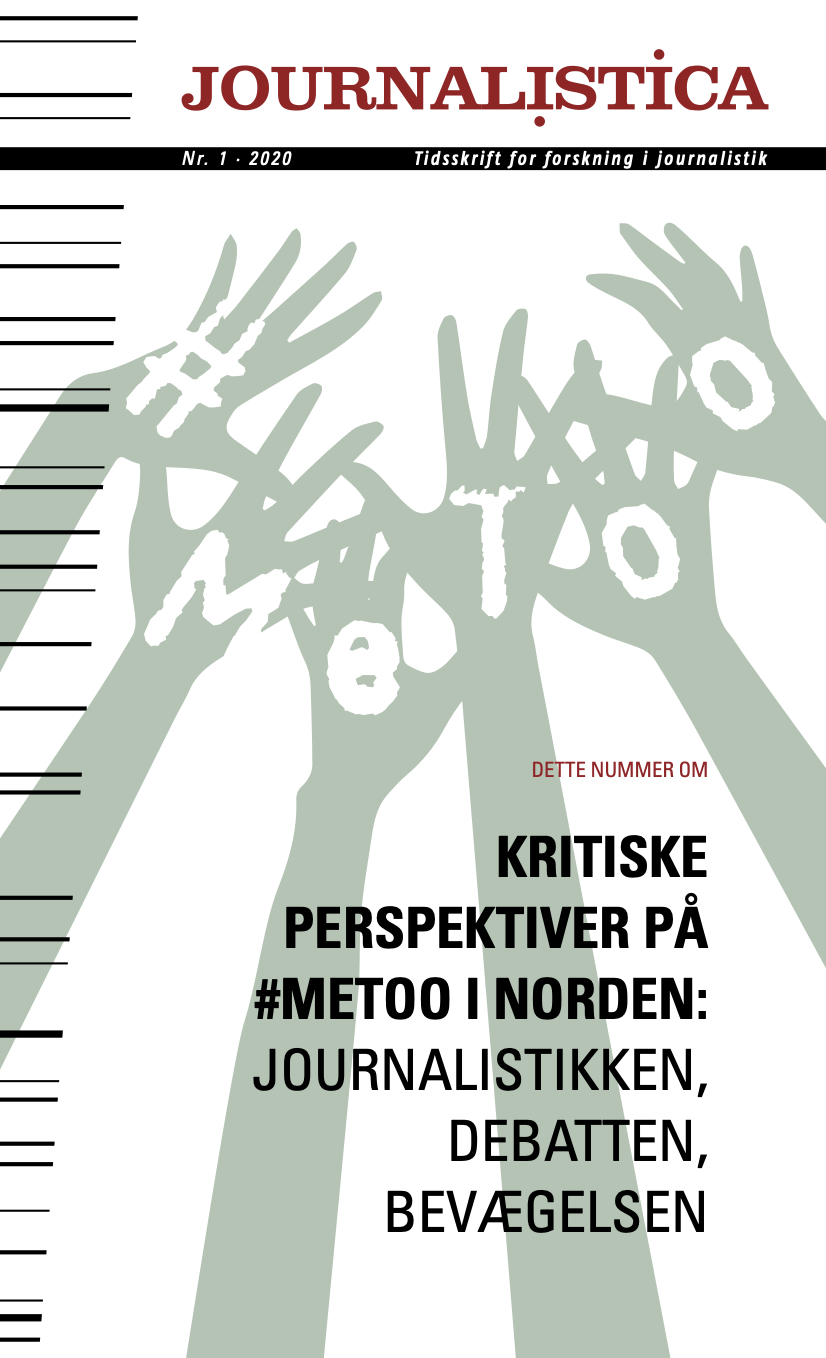Brave women sound the alarm – representations of men and women in the Swedish media coverage of #MeToo
DOI:
https://doi.org/10.7146/journalistica.v14i1.123510Keywords:
#MeToo, Sweden, media, discourse analysis, representations, sexual harassmentAbstract
In autumn 2017 in Sweden, the #MeToo movement and sexual assault became a focus of broad debate. Swedish media coverage of the movement was centred around the many petitions made by anonymous groups of women to illuminate the extent of the problem of sexual assault, as well as a few cases of accusations against well-known and powerful men in both the culture and media industries. In order to elicit common representations of men and their female accusers, this study applies critical discourse analysis (CDA) to news media coverage and Facebook comments of three of those accused men: TV personality Martin Timell, journalist Fredrik Virtanen and culture personality Jean-Claude Arnault. The results indicate that representations of women as both witnesses and heroines work to reinforce notions of female responsibility as a means to halt sexual assault, while representations of men as sexual predators build on demarcations of illegal and mere misogynistic or “bad” behaviour, which in turn reinforce notions of male victimhood. These representations point to legal discourse as hegemonic, as it seems to limit the discussion and only present individual solutions, such as women bearing witness, to the structural problem of sexual assault. Simultaneously, the results indicate that the #MeToo movement and other feminist discourse have also had an effect on news media representations of sexual assault by broadening the concept beyond the consent/rape dichotomy.
Downloads
Published
How to Cite
Issue
Section
License
Forfattere, der publicerer deres værker via dette tidsskrift, accepterer følgende vilkår:
- Forfattere bevarer deres ophavsret og giver tidsskriftet ret til første publicering, samtidigt med at værket er omfattet af en Creative Commons Attribution-licens, der giver andre ret til at dele værket med en anerkendelse af værkets forfatter og første publicering i nærværende tidsskrift.
- Forfattere kan indgå flere separate kontraktlige aftaler om ikke-eksklusiv distribution af tidsskriftets publicerede version af værket (f.eks. sende det til et institutionslager eller udgive det i en bog), med en anerkendelse af værkets første publicering i nærværende tidsskrift.
- Forfattere har ret til og opfordres til at publicere deres værker online (f.eks. i institutionslagre eller på deres websted) forud for og under manuskriptprocessen, da dette kan føre til produktive udvekslinger, samt tidligere og større citater fra publicerede værker (se The Effect of Open Access).




